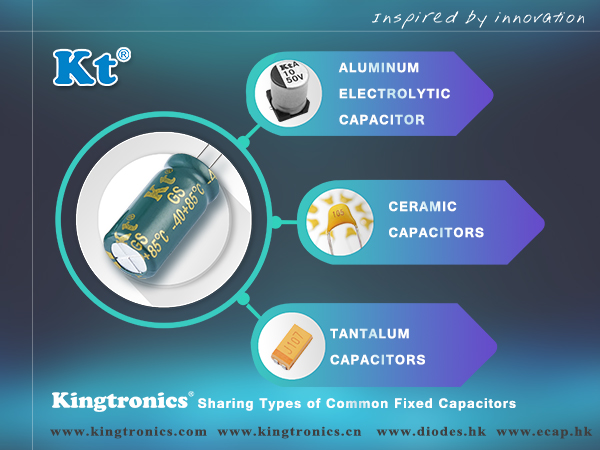Kt Kingtronics Sharing Types of Common Fixed Capacitors
1. Aluminum electrolytic capacitors:
the capacitance density is large, but the leakage current is large, the stability is poor, with positive and negative polarity which requires to pay attention to the polarity during installation. It is applicable to power filter or low-frequency circuit.
2. Tantalum and niobium electrolytic capacitors:
small in size, large in capacity, stable in performance, long in life, large in insulation resistance, and good in temperature characteristics, and used in equipment with high requirements.
3. Ceramic capacitors:
small size, good heat resistance, low loss, high insulation resistance, but small capacity, suitable for UHF circuit bypass, coupling, filtering, etc.
4. Monolithic capacitors:
It has the advantages of high temperature resistance, small size, large capacitance and good stability, and is widely used for resonance, coupling, filtering and bypass of high-frequency circuits in precision instruments.
5. Polyester capacitors:
non-polar, small size, large capacity, but poor stability. It is used in medium and low frequency circuits, such as signal coupling, bypass, isolation, etc., and should not be used in high frequency circuits.
6. CBB capacitors:
non-polar, low loss, good stability, can replace mica capacitor, and is used for circuits with high requirements.










